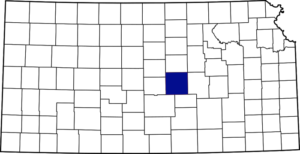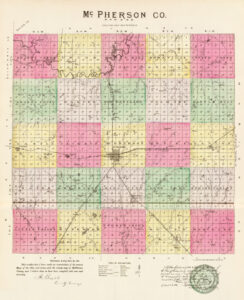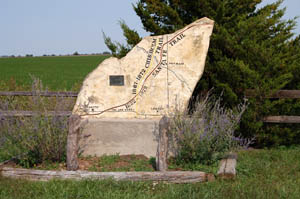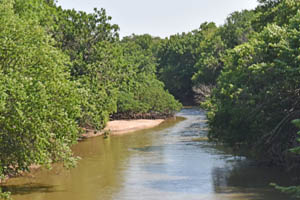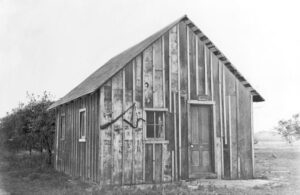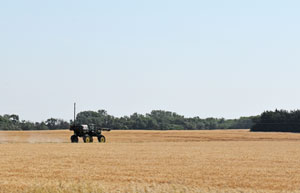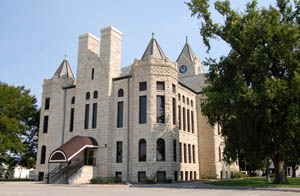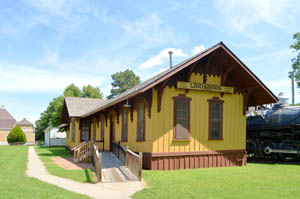Towns & Places:
Canton
Galva
Inman
Lindsborg
Marquette
McPherson – County Seat
Moundridge
Roxbury – Unincorporated
Windom
Santa Fe Trail in McPherson County
Maxwell Wildlife Refuge
McPherson Valley Wetlands
McPherson County is located in central Kansas. The county is named for Civil War General James B. McPherson. The county population was 30,223 in 2020. The largest city and county seat is McPherson. McPherson County is bounded on the north by Saline County, on the east by Marion, on the south by Harvey and Reno, and on the west by Rice and Ellsworth.
The general surface of the county is a rolling prairie, somewhat broken in the north and level in the central part. In its early history, bottomlands comprised seven percent of the total area, averaging from one-half to one mile in width. The timber belts along the streams were wide and contained cottonwood, box-elder, ash, oak, mulberry, hackberry, coffee bean, and willow. The Little Arkansas River crosses the southwestern corner, and the Smoky Hill River flows through the northwestern section. Sharp’s, Gypsum, Blaze, Turkey, Black Kettle, Emma, and Crooked were several fair-sized creeks. Limestone, sandstone, and gypsum were abundant.
From the 1820s to the 1870s, the Santa Fe Trail passed through McPherson County. The trail entered east of Canton, south of Galva, north of Inman, and west towards Lyons.
In 1855, Charles O. Fuller established a ranch adjacent to the Running Turkey Creek Crossing about two miles south and one mile east of Galva. Fuller’s Ranch provided accommodations for travelers on the Santa Fe Trail and was probably the first white settlement in McPherson County. Charles Fuller kept it.
The first settler was Isaac Sharp, who took a claim on the creek that bears his name in the winter of 1860. He brought with him his father and mother from Pennsylvania. Mrs. Sharp died and was buried on the creek. Sharp trapped, hunted, and traded with the Indians. When the Civil War broke out and the Indians became troublesome, he moved to Council Grove. Afterward, there were no settlements for several years, although trappers and traders visited the county.
Peketon County was established in 1860 and contained all the territory in Kansas west of the 6th principal meridian and south of Township 16. On February 17, 1865, Peketon County was abolished, and McPherson County was made a part of Marion County, which extended from the west line of Chase County to the present western boundary of Kansas.
A man named Lewis located a claim on the Smoky Hill River, which he improved to some extent. A man named Peters settled on Sharp’s Creek but died shortly afterward. A man named Wheeler built a stone corral at the crossing of the Santa Fe Trail over the Little Arkansas River in 1865. The following year, Colonel Grierson with the Seventh Kansas Cavalry encamped with his troops there. They built a stockade of cottonwood logs for a headquarters and built huts to live in.
In 1866, settlers came in considerable numbers. In January, Milton and Jefferson Harper and S. Delano located on Sharp’s Creek; in May, ten Swedes — A. Klingbery, F. Lundstrum, J. Ericson, A. Lend, J. F. Huldquist, P. Ahlquist, N. Sponberg, G. Johnson, B. Johnson, and Andrew Hanson, located on the Smoky Hill River. The same month, H. B. Tolle, Sanford, and Lowell Reese settled on Gypsum Creek. That year, others who settled in various parts of the county were D. B. Ray, Robert Minnis, J. G. Maxwell and family, E. R. Falley, G. W., and S. D. Shields and William Brown.
In 1867, the Pawnee Indians raided Gypsum Creek, murdered a man by the name of Temple, and hid his body in a ravine. The Osage raided the vicinity of Sharp’s Creek the next year and carried off Mrs. Bassett and a child a few days old. The woman was too weak to ride a horse, so she was left on the open prairie, where the search party later found her and her baby in a pathetic condition. The baby died from exposure.
In 1868, several colonies of Swedes emerged. One colony purchased 13,000 acres of the Kansas Pacific Railroad company in the vicinity of the present town of Marquette and settled on it. The Chicago Swedish company made heavy purchases, especially along the Smoky Hill River, which is located in Lindsborg. Other smaller colonies settled in different parts of the county.
In 1868, Solomon Stephens and L. N. Holmberg were appointed Justices of the Peace — the first officers in McPherson County. In 1869, the first election for McPherson Township was held. McPherson was organized as a county in the spring of 1870 at a meeting in Sweadal. The population at that time was 738. Sweadal, located about one mile and a half southwest of the present site of Lindsborg, was selected as the county seat. However, the County Commissioners resolved to meet in McPherson in September.
In 1871, the Ashtabula Colony, the officers who traveled nearly all over Kansas in search of a location, came to McPherson County and settled in King City Township. They founded the town of King City, which was once a serious rival of McPherson for the county seat but is now extinct. The colony took its name from Ashtabula, Ohio.
The town of McPherson was laid out and surveyed in June 1872 by the McPherson Town Company; J. R. Fisher was President, and L. G. Skencke was secretary.
In February 1873, a colony from Ashland, Kentucky, located three miles east of McPherson. They hauled the timber for their houses from Salina. In September 1873, the first Mennonite settlement was made in the county; they bought a large amount of land from the Atchison, Topeka & Santa Fe Railroad Company and made many purchases from homesteaders.
In April 1873, a petition to relocate the county seat was filed. In May, the McPherson Town Company had offered, as an inducement for the location of the county seat at this point, the unrestricted use of rooms for ten years and the donation of two squares of land on the town site. At the June 10, 1873 election, McPherson received 605 votes, New Gottland 325, King City 3, and Lindsborg 1. The McPherson Town Company’s offer was accepted, and the County Commissioners selected blocks 56 and 65. The town company then erected a two-story frame courthouse, which was used for ten years when a large stone structure was built. Thus, the county seat was established at McPherson and has remained since.
The town of Marquette was incorporated on June 10, 1874. McPherson, the county seat, was incorporated as a city of the third class on March 4, 1874.
That winter after the grasshopper disaster of 1874, the grangers of McPherson County asked the government for rations for 10,000 people for six months, 10,000 blankets, and 10,000 of each article of clothing. T. D. Wickersham, the promoter of this request, helped distribute the goods and got into serious trouble for the supposed theft of money and supplies. Wickersham was an ill-starred name in McPherson County, a James Wickersham having fled the country in 1870 to escape lynching, and another James Wickersham having been shot, but not killed, by James Abercrombie in 1876. In 1875, $3,300 was stolen from the county, and the treasurer had no safe place to keep the funds collected.
On the night of March 1, 1875, the county treasury was robbed of about $3,500, and the robber or robbers were never discovered. On June 29, 1875, G. W. Gandy killed a buffalo within six miles of McPherson. The first county fair was held on October 11 and 12, 1875.
On June 17, 1876, a terrible wind storm, or cyclone, passed over the northern part of the county. Several houses were blown down, and several people were injured, but none were killed. Large trees were twisted off or uprooted where they crossed the Smoky Hill River.
In 1877, McPherson was the foremost county in the state in agricultural products, and a grand celebration, attended by 5,000 people, was held at the county seat. Although agitation for railroads had been ongoing since 1872, these products were still being marketed in Salina and other towns outside the county.
In 1878, McPherson County reported 72 schoolhouses and not one saloon.
As early as 1875, city leaders of Marion held a meeting to consider a branch railroad from Florence. In 1878, the Atchison, Topeka & Santa Fe Railroad and parties from Marion and McPherson Counties chartered the Marion and McPherson Railway Company. In 1879, a branch line was built from Florence to McPherson. In 1880, it was extended to Lyons, and in 1881, it was extended to Ellinwood. The Atchison, Topeka & Santa Fe Railroad leased and operated the line. The original branch line connected Florence, Marion, Canada, Hillsboro, Lehigh, Canton, Galva, McPherson, Conway, Windom, Little River, Mitchell, Lyons, and Chase, then connected with the original main line at Ellinwood.
In 1887, the Chicago, Kansas, and Nebraska Railroad extended its main line from Herington to Pratt. This main line connected Herington, Ramona, Tampa, Durham, Waldeck, Canton, Galva, McPherson, Groveland, Inman, Medora, Hutchinson, Whiteside, Partridge, Arlington, Langdon, Turon, Preston, Natrona, Pratt. In 1888, this main line was extended to Liberal. Later, this line was extended to Tucumcari, New Mexico, and Santa Rosa, New Mexico, where it connected with the Southern Pacific from El Paso, Texas. The Chicago, Kansas, and Nebraska Railway was absorbed by the Chicago, Rock Island & Pacific Railroad. This line is also called the “Golden State Route.”
In 1910, stock-raising and agriculture were the chief occupations of the people, and this locality was second to none in the state in products of this character. The annual output of the farms was over $5,000,000. The corn crop of 1910 brought $1,500,000; oats, nearly $1,000,000; barley, $100,000; sorghum, $100,000; Kafir corn, $80,000; wheat, $77,000; tame grass, $300,000, and wild grass, $100,000. The total value of field crops was $3,500,000, and livestock for slaughter was $1,600,000. Other essential products are poultry, butter, milk, fruit, eggs, and broomcorn.
The assessed valuation of property in 1910 was $44,589,000. The population was 21,521 in the same year, which makes the wealth per capita nearly $2,100.
The National Old Trails Road, also known as the Ocean-to-Ocean Highway, was established in 1912 and was routed through Windom, Conway, and McPherson.
The railroad line from Florence to Marion was abandoned in 1968. In 1992, the line from Marion to McPherson was sold to Central Kansas Railway. In 1993, the line from Marion to McPherson was abandoned after heavy flood damage.
Also See:
Kansas Counties
Kansas Destinations
The Santa Fe Trail Across Kansas
Sources:
Blackmar, Frank W.; Kansas: A Cyclopedia of State History, Vol I; Standard Publishing Company, Chicago, IL 1912.
Cutler, William G; History of Kansas; A. T. Andreas, Chicago, IL, 1883.
Kansas Post Office History
Wikipedia


